Construction of the first VLBA antenna in Pie Town, NM.
1986-10-15

Construction of the first VLBA antenna in Pie Town, NM.
1986-10-15
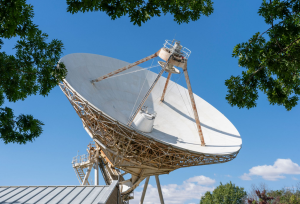
This antenna in North Liberty, Iowa is one of 10 radio telescopes that make up the National Science Foundation National Radio Astronomy Observatory Very Large Baseline Array, which spans 5,351 miles from Hawaii to the Virgin Islands. It is the only NSF VLBA telescope located in the Midwest, making it a crucial component of the array.
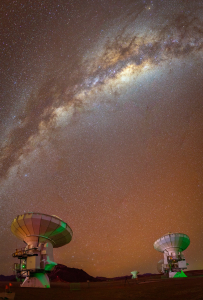
View of the Milky Way Galaxy seen from the ALMA Array Operations Site (AOS). The AOS is located on the Chajnantor plateau of the Chilean Andes, at an altitude of 5000 meters, making it the second highest building in the world. Light from the galaxy core shines even more brightly when captured at an altitude of 5000 meters – with so much less atmosphere to penetrate.
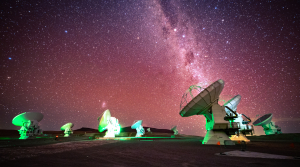
The astro-modified camera used to take this photo lets in the hydrogen alpha light that is normally filtered out. This modification makes the camera more sensitive to the red end of the electromagnetic spectrum, thus giving a pink tint to the sky.
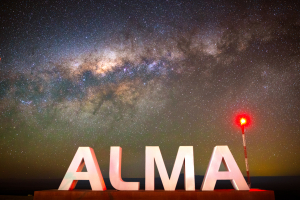
The red light at the top of the holography tower backlights the ALMA sign at the Operations Support Facility (OSF) while the core of the Milky Way Galaxy stands watch. The holography system is used to precisely calibrate the surface of the ALMA antennas.
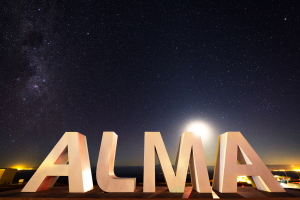
The bright Moon washes out the fainter stars as it rests behind the ALMA sign at the Operations Support Facility (OSF).